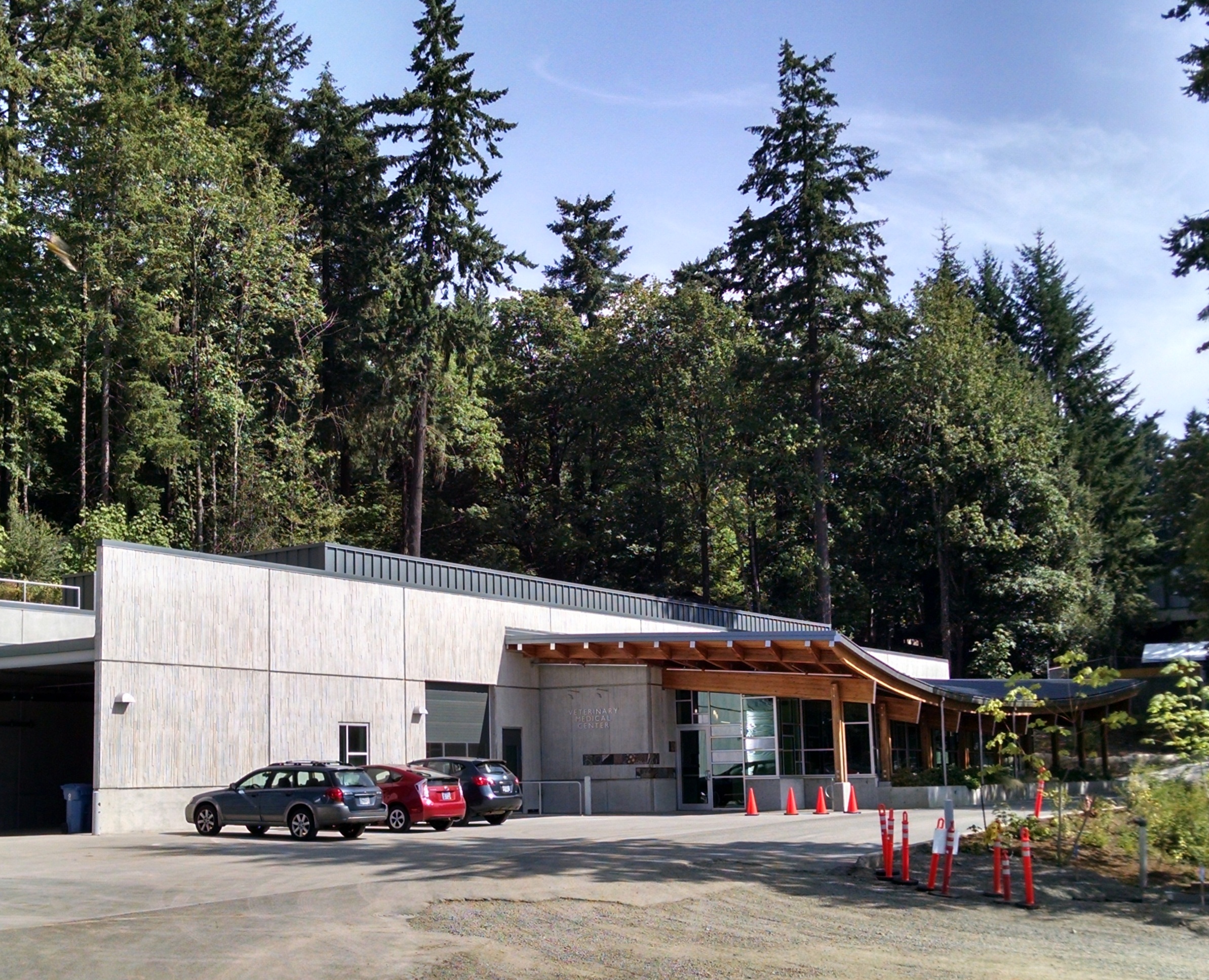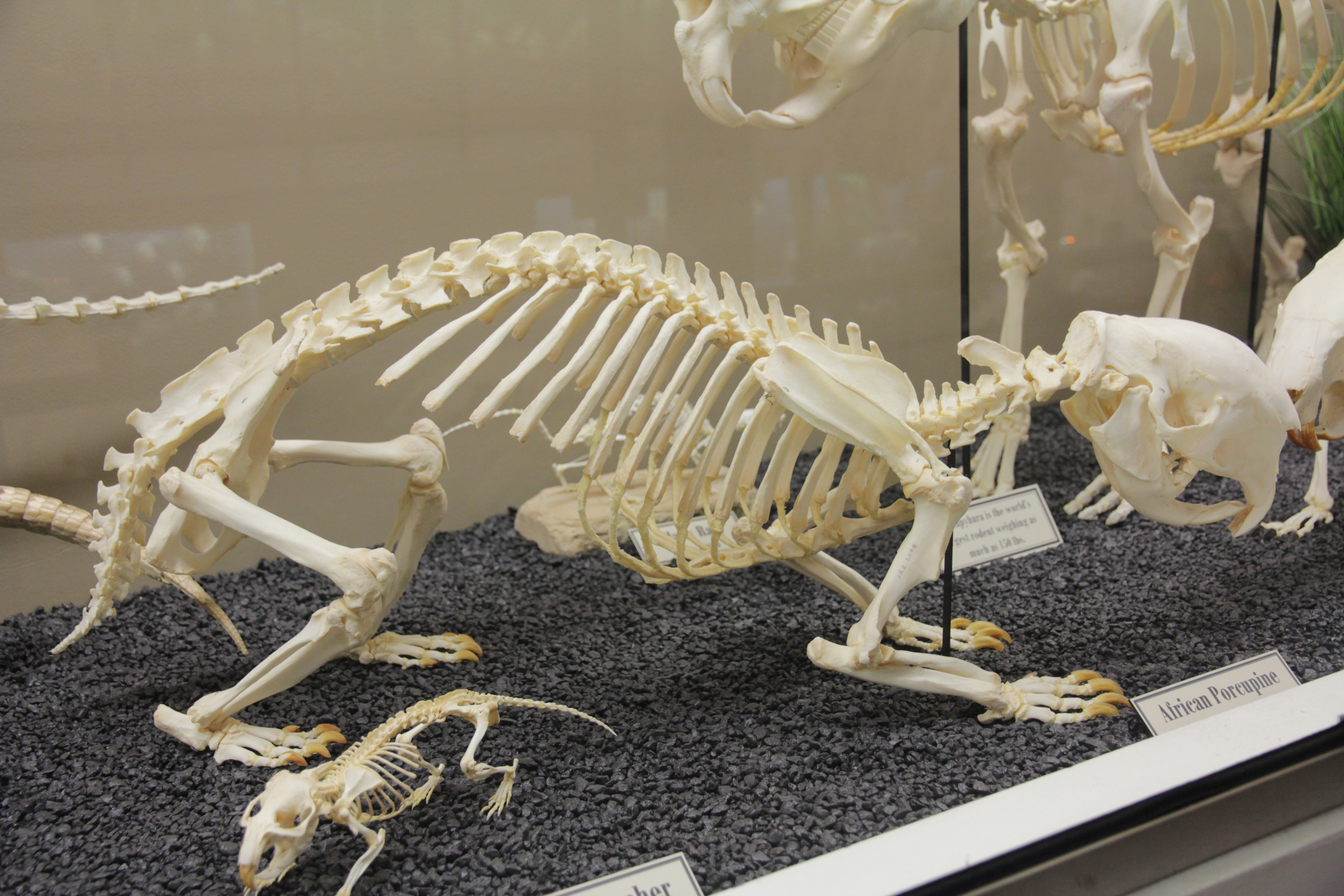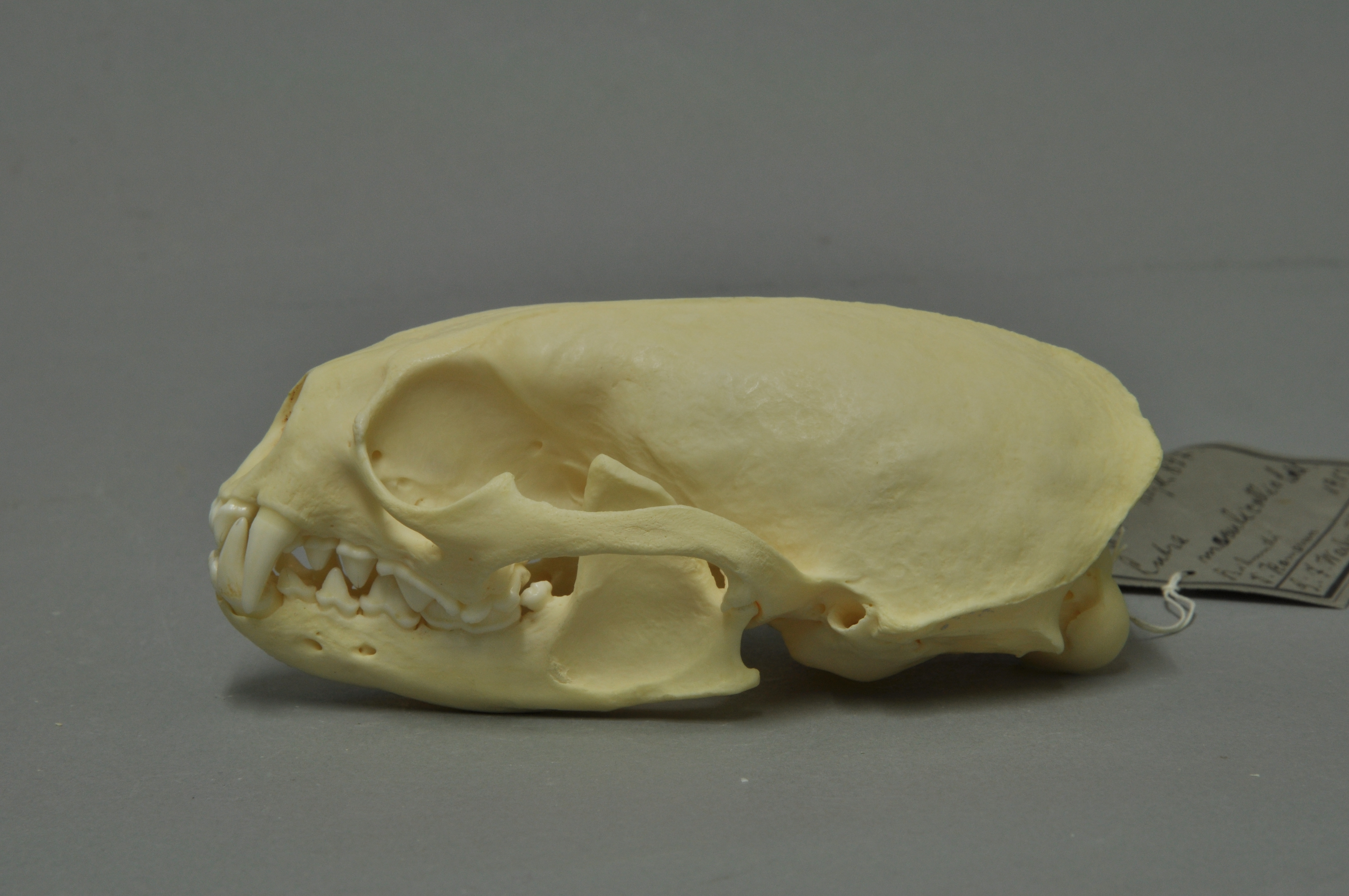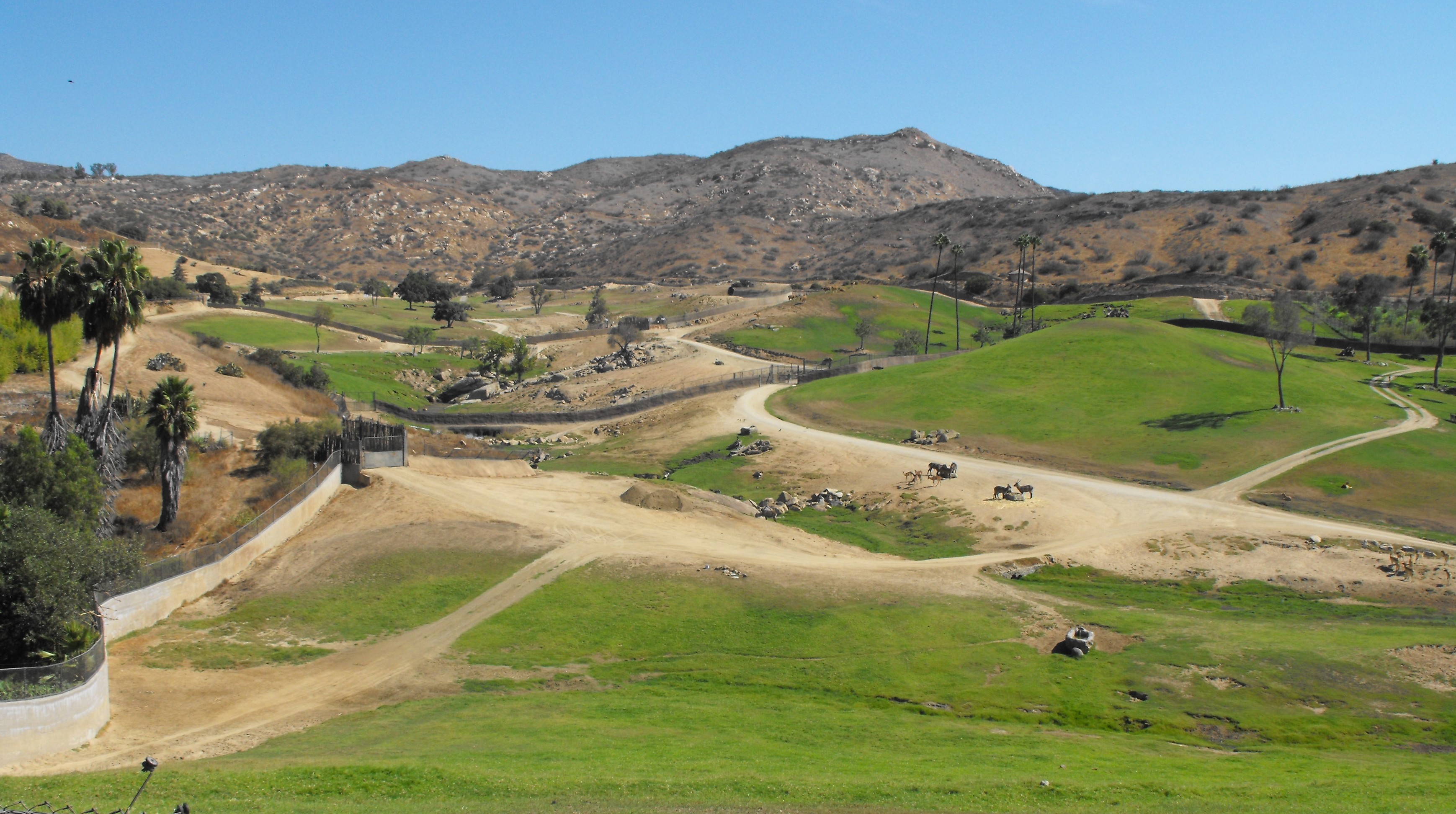|
Oregon Zoo
The Oregon Zoo, originally the Portland Zoo and later the Washington Park Zoo, is a zoo located in Washington Park, Portland, Oregon, approximately southwest of downtown Portland. Founded in 1888, it is the oldest zoo west of the Mississippi River. The zoo is owned by the regional Metro government. It currently holds more than 1,800 animals of more than 230 species, including 19 endangered species and 9 threatened species. The zoo also boasts an extensive plant collection throughout its animal exhibits and specialized gardens. The zoo also operates and maintains the narrow gauge Washington Park & Zoo Railway that previously connected to the International Rose Test Garden inside the park, but currently runs only within the zoo. The Oregon Zoo is Oregon's largest paid and arguably most popular visitor attraction, with more than 1.6 million visitors in 2016. The zoo is a member of the Association of Zoos and Aquariums, and the World Association of Zoos and Aquariums. History T ... [...More Info...] [...Related Items...] OR: [Wikipedia] [Google] [Baidu] |
Washington Park (Portland, Oregon)
Washington Park is a public urban park in Portland in the U.S. state of Oregon. It includes a zoo, forestry museum, arboretum, rose garden, Japanese garden, amphitheatre, memorials, archery range, tennis courts, soccer field, picnic areas, playgrounds, public art and many acres of wild forest with miles of trails. Washington Park covers more than on mostly steep, wooded hillsides which range in elevation from at 24th & West Burnside Street to at SW Fairview Blvd. It comprises of city park land that has been officially designated as "Washington Park" by the City of Portland, as well as the adjacent Oregon Zoo and the Hoyt Arboretum, which together make up the area described as "Washington Park" on signs and maps. History The City of Portland purchased the original of Washington Park in 1871 from Amos King for $32,624, a controversially high price for the time. The area, designated "City Park", was wilderness with few roads. Thick brush, trees and roaming cougar disco ... [...More Info...] [...Related Items...] OR: [Wikipedia] [Google] [Baidu] |
Packy (elephant)
Packy (April 14, 1962 – February 9, 2017) was an Asian elephant at the Oregon Zoo (Portland Zoological Gardens at the time of his birth) in Portland, Oregon, United States. He was famous for having been the first elephant born in the Western Hemisphere in 44 years. At the time of his death, he was the oldest male Asian elephant in North America. With a shoulder height of and overall height of more than when standing up straight, Packy was also one of the tallest elephants in the United States and perhaps one of the tallest worldwide. History Packy's mother, Belle, was wild-born in Thailand, around 1952. His father, Thonglaw, was born in Cambodia around 1947. Both were captured and brought to Morgan Berry, an elephant trainer in Seattle, Washington, in 1959. Belle became pregnant with Packy on July 19, 1960, at the Woodland Park Zoo. This went undiscovered for a year. Meanwhile, both 8-year-old Belle and 13-year-old Thonglaw, along with Berry's other female, 5-year-old Pet, were ... [...More Info...] [...Related Items...] OR: [Wikipedia] [Google] [Baidu] |
Crested Porcupine
The crested porcupine (''Hystrix cristata''), also known as the African crested porcupine, is a species of rodent in the family Hystricidae native to Italy, North Africa and sub-Saharan Africa. Characteristics The adult crested porcupine has an average head and body length around long, discounting the tail, and weighs from . It is one of the largest rodents in the world. Almost the entire body is covered with bristles which are either dark brown or black and rather coarse. This mammal is recognizable by the quills that run along the head, nape, and back that can be raised into a crest, hence the name crested porcupine. Also, some sturdier quills which are about in length run along the sides and back half of the body. These sturdier quills are used, for the most part, for defense and are usually marked with light and dark bands which alternate; these are not firmly attached. This porcupine has a short tail which has rattle quills at the end. The rattle quills broaden at t ... [...More Info...] [...Related Items...] OR: [Wikipedia] [Google] [Baidu] |
West African Slender-snouted Crocodile
The West African slender-snouted crocodile (''Mecistops cataphractus''), or slender-snouted crocodile, is a critically endangered species of African crocodile. It is one of five species of crocodile in Africa, the other four being the Central African slender-snouted, Nile, West African and dwarf crocodiles. The slender-snouted crocodile (''M. cataphractus'') was thought to be distributed across west Africa and into central Africa but the central African species has been separated as the Central African slender-snouted crocodile (''M. leptorhynchus'') based on studies in 2014 and 2018 that indicated that both were distinct species. The name ''cataphractus'' is retained for the West African species as that species was described first based on specimens from western Africa. The two species diverged about 6.5–7.5 mya, living in different river drainage zones that were geographically separated from each other by the Cameroon Line. Etymology The genus name ''Mecistops'' is most ... [...More Info...] [...Related Items...] OR: [Wikipedia] [Google] [Baidu] |
Spotted-necked Otter
The spotted-necked otter (''Hydrictis maculicollis''), or speckle-throated otter, is an otter native to sub-Saharan Africa. Description The spotted-necked otter is a relatively small species, with males measuring from nose to rump, and weighing , while females are and . The tail is long and muscular, measuring in both sexes. (2011). Like many other otters, it is sleek and has webbed paws for swimming. Females have two pairs of s, and while males have a large , the is hidden beneath the sk ... [...More Info...] [...Related Items...] OR: [Wikipedia] [Google] [Baidu] |
Straw-coloured Fruit Bat
The straw-coloured fruit bat (''Eidolon helvum'') is a large fruit bat that is the most widely distributed of all the African megabats. It is quite common throughout its area ranging from the southwestern Arabian Peninsula, across forest and savanna zones of sub-Saharan Africa. It is listed as Near Threatened on the IUCN Red List due to a decreasing population trend. Straw-coloured fruit bats travel in massive colonies of at least 100,000 bats and sometimes massing up to 1 million. From October to end of December every year, in the largest migration of mammals on the planet, up to 10 million straw-coloured fruit bats congregate in Kasanka National Park, Zambia, roosting in a 2 hectare area of Mushitu forest each day. This migration was only discovered in 1980. Their necks and backs are a yellowish-brown colour, while their undersides are tawny olive or brownish. Description The straw-coloured fruit bat is named for the silky yellowish or straw colour of its fur. The wings are bla ... [...More Info...] [...Related Items...] OR: [Wikipedia] [Google] [Baidu] |
Rodrigues Fruit Bat
The Rodrigues flying fox or Rodrigues fruit bat (''Pteropus rodricensis'') is a species of bat in the family Pteropodidae, the flying foxes or fruit bats. It is endemic to Rodrigues, an island in the Indian Ocean belonging to Mauritius. Its natural habitat is tropical lowland forests. The bats are sociable, roost in large groups during the day and feed at night, squeezing the juice and flesh out of fruits. They are hunted by humans for food and their numbers have been dwindling, and the International Union for Conservation of Nature has rated the species as being "endangered". In an effort to preserve them from extinction, some bats have been caught and are being bred in various zoos around the world. Ecology It is a sociable species which lives in large groups. It can reach 350 g in weight and has a wingspan of 90 cm. At night, the bats forage in dry woodland for fruit of various trees, such as tamarinds, rose-apples, mangoes, palms, and figs. Like many other frui ... [...More Info...] [...Related Items...] OR: [Wikipedia] [Google] [Baidu] |
Los Angeles Zoo
The Los Angeles Zoo and Botanical Gardens is a zoo founded in 1966 and located in Los Angeles, California. The city of Los Angeles owns the entire zoo, its land and facilities, and the animals. Animal care, grounds maintenance, construction, education, public information, and administrative staff are city employees. As of June 2019, Denise M. Verret serves as the zoo's director, the first female African American director of an Association of Zoos and Aquariums-accredited institution. History The first zoo, called Eastlake Zoo, opened in Eastlake Park (renamed Lincoln Park in 1917) in 1885. The second zoo, Griffith Park Zoo, opened in 1912 and was located about south of the current zoo site until it was closed in August 1966. Remnants of the original zoo remain. The site of the current zoo was formerly the location of Rodger Young Village, which was itself built on the land which had been used for the Griffith Park Aerodrome. The zoo opened in its present location on Novem ... [...More Info...] [...Related Items...] OR: [Wikipedia] [Google] [Baidu] |
San Diego Wild Animal Park
The San Diego Zoo Safari Park, originally named the San Diego Wild Animal Park until 2010, is an 1,800 acre (730 ha) zoo in the San Pasqual Valley area of San Diego, California, near Escondido. It is one of the largest tourist attractions in San Diego County. The park houses a large array of wild and endangered animals including species from the continents of Africa, Asia, Europe, North and South America, and Australia. This includes the largest collection of hoofed mammals in the world. The park is in a semi-arid environment, and one of its most notable features is the Africa Tram, which explores the expansive African exhibits. These free-range enclosures house such animals as antelopes, giraffes, buffalo, cranes, and rhinoceros. The park is also noted for its California condor breeding program. The park, visited by 2 million people annually, houses 3,000 animals representing roughly 400 species, as well as 3,500 plant species. Depending on the season, the park has about 40 ... [...More Info...] [...Related Items...] OR: [Wikipedia] [Google] [Baidu] |
Condor
Condor is the common name for two species of New World vultures, each in a monotypic genus. The name derives from the Quechua ''kuntur''. They are the largest flying land birds in the Western Hemisphere. They are: * The Andean condor (''Vultur gryphus''), which inhabits the Andean mountains. * The California condor (''Gymnogyps californianus''), currently restricted to the western coastal mountains of the United States and Mexico and the northern desert mountains of Arizona in the United States. Taxonomy Condors are part of the family Cathartidae which contains the New World vultures, whereas the 15 species of Old World vultures are in the family Accipitridae, that also includes hawks, eagles, and kites. The New World and Old World vultures evolved from different ancestors. They both are carrion-eaters and the two groups are similar in appearance due to convergent evolution. Description Both condors are very large broad-winged soaring birds, the Andean condor being short ... [...More Info...] [...Related Items...] OR: [Wikipedia] [Google] [Baidu] |
Washington Park (MAX Station)
Washington Park is a light rail station in Portland, Oregon, United States, served by TriMet as part of the MAX Light Rail system. Situated between Sunset Transit Center and Goose Hollow/Southwest Jefferson Street station, it is the 17th and 3rd station eastbound on the Blue Line and the Red Line, respectively. The station's two tracks and island platform are part of the Robertson Tunnel beneath Portland's West Hills. Its head house and surface-level plaza occupy the middle of a parking lot surrounded by the Hoyt Arboretum, Oregon Vietnam Veterans Memorial, Oregon Zoo, Portland Children's Museum, and World Forestry Center. Washington Park is the only completely underground station in the MAX system. At below ground, it is the deepest transit station in North America and in the western hemisphere, and the sixth-deepest in the world.Washington Park's depth is surpassed by: * Arsenalna station of the Kyiv Metro, below ground * Hongtudi station of Chongqing Rail Transit, ... [...More Info...] [...Related Items...] OR: [Wikipedia] [Google] [Baidu] |
MAX Blue Line
The MAX Blue Line is a light rail service in Portland, Oregon, United States, operated by TriMet as part of the MAX Light Rail system. It travels east–west for approximately —the longest in the network—between Hillsboro, Beaverton, Portland, and Gresham and serves 48 stations from to . The line carried an average 55,370 riders each day on weekdays in September 2018, the busiest of the five MAX lines. It runs for 22 hours per day from Monday to Thursday, with headways of between 30 minutes off-peak and five minutes during rush hour. Service runs later in the evening on Fridays and Saturdays and ends earlier on Sundays. The success of local freeway revolts in Portland in the early 1970s led to the reallocation of federal assistance funds from the proposed Mount Hood Freeway and Interstate 505 (I-505) projects to mass transit. Amid various proposals, local governments approved the construction of a light rail line between Gresham and Portland in 1978. Referred to as th ... [...More Info...] [...Related Items...] OR: [Wikipedia] [Google] [Baidu] |








